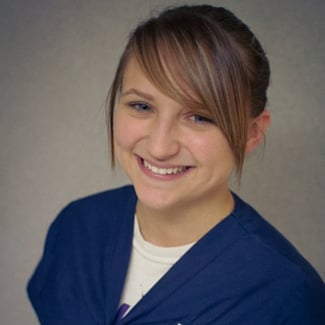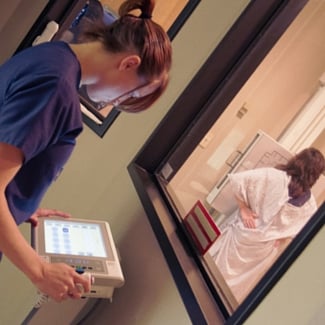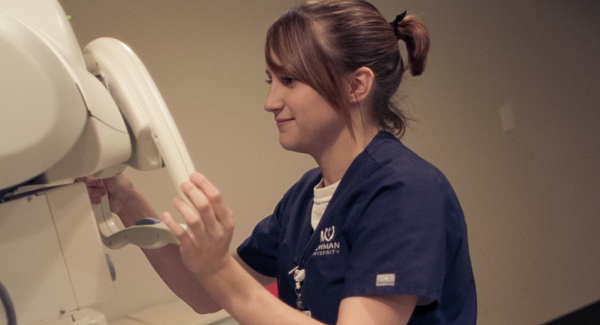Katie Little is no stranger to lead vests. But she’s not headed into a gunfight any time soon. She’s got her own superhuman skills she hopes will render her future career plans bulletproof.

X-ray vision may be at the top of many superpower wish lists, but for Newman University May 2015 graduate Katie Little, taking a look past the superficial and into the depths of other human beings is a daily feat. Last year Little rigorously honed her radiologically assisted eyeballs by interning at Wesley Medical Center.
This past summer she passed the ARRT registry (national exam) and her internship has led to full time employment at Wesley in the Imaging Department.
But that’s just the beginning of her superpowers. Taking a gander at people’s insides may seem cool on the outside, but in reality it’s a lot of hard work and dedication she says.
Picture this: Early mornings and long hours. Dangerous, but meticulously controlled working conditions. And not to mention the exams. So many exams. All so she can advance her dreams of becoming a medical professional.
But Little said it was totally worth it.
During her internship Little worked first or second shift in Wesley’s Radiology Department.

Her responsibilities varied every couple of weeks as she made her rotations. From heavy, but portable radiology devices that can be carted to an immobilized patient, to getting to the guts of internal fluoroscopy, to covering immediate – and sometimes gory – X-rays in the Emergency Room, Little learned to sharpen her skills alongside trained professionals who can turn lessons on the page into real-world experience in a heartbeat.
But her true tests came when she was asked to prove her skills on her own. She began the first semester of her internship by simply observing, and then as her knowledge and abilities advanced, she found herself exploring the vast ins and outs of the whole wide world of radiologic technology.
“I expected just plain X-rays you see on medical shows,” Little said. “As I started learning more about the field, I realized there was way more to it than just taking a picture.”
In fact, it’s rare to even see an actual physical X-ray anymore as most of the photos are projected into digital imaging plates that are uploaded into a computer system and promptly re-formatted and re-used. These pictures are then reviewed by doctors via computer screens in a few minutes instead of enormous floppy films developed and dangling from light walls.

But the skills she says that have really developed over the past couple of years have more to with the hearts of her patients than their bones.
“You have to be able to sweet talk the kids and help them not be afraid of this giant machine you are bringing into their room,” Little says. “It makes you feel good when you hear how beautiful of a person you are from an ill patient just from holding their hand during a procedure.”
She sees a lot in her field. From spinal taps to gastrointestinal fluoroscopy, and from bone-jutting emergency trauma to infants in intensive care, it takes a big heart to witness all the medical moments in others’ lives, especially where children are involved. Nevertheless, the scope and depth of the challenges Little now faces each day are certainly never a bore.
Jumping right into Newman’s program from high school, Little has been in love with her profession of choice ever since her first X-ray. As her classes and internship became progressively more demanding, her smiling attitude and dedication to her career made it possible to bounce between two jobs and classes with few breaks in between.
Little’s ultimate goal is to become a physician’s assistant. A well-rounded Newman education, her internship and current position at Wesley Medical Center has Little on her way.

